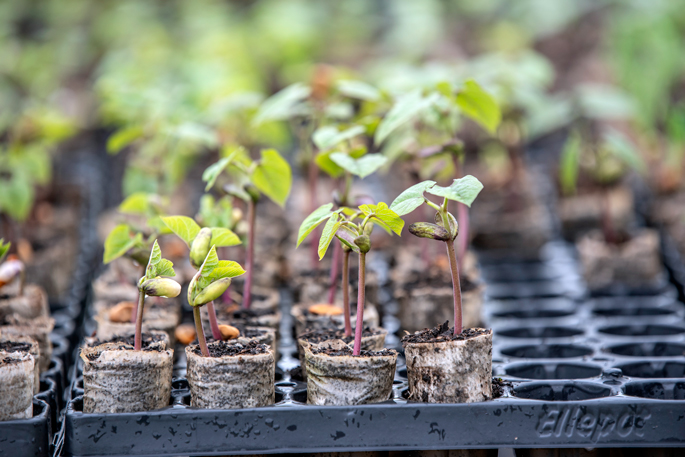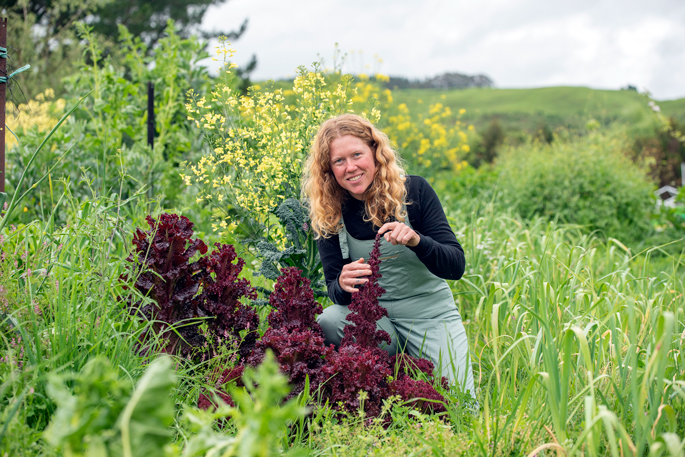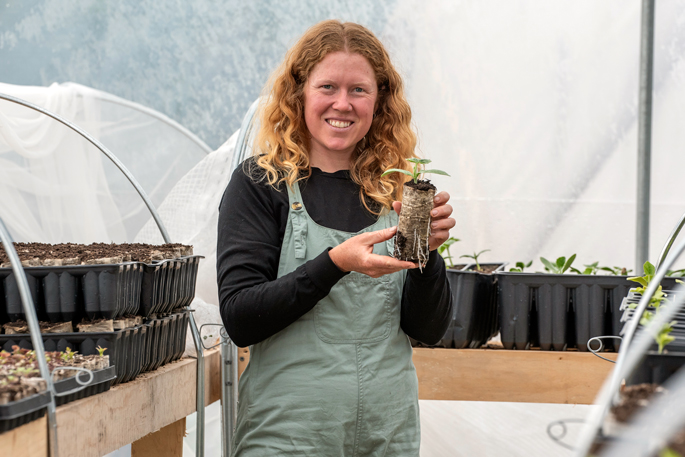Several years ago, Australian Jemma Ostenfeld was a beauty therapist living and working in the Gold Coast suburbs.
Fast forward and she’s happily living in a cabin in Rotorua, immersed in growing and saving heritage vegetable varieties for seed collection and saving, and seedling production.
After four years travelling around New Zealand, she fell in love with the country and realised her passion was producing fresh, organic food, and seedlings for home gardeners.
“I really wanted to learn the art of regenerative agriculture and sought out market gardeners to expand my knowledge,” says Jemma.
Gaining experience
Jemma has spent time at some of New Zealand’s iconic, organic market gardens, such as Roebuck Farm in Taranaki, and Lux Organics in Rotorua.
“I also spent time at Kōanga Institute and Setha’s seeds in Hawke’s Bay, which are the only two commercial seed savers in New Zealand. Here I learnt how to grow plants for their seeds, and the importance of their preservation.
“After Cyclone Gabrielle both struggled to get their seeds out and it made me realise how fragile seed security is in New Zealand.
“Caches of seed need to be kept in other regions. So I am dedicating my time to be another person growing and saving these precious heritage seeds in another area.”
Jemma was offered the use of some land in Hamurana, Rotorua, by Janine Cotter of Brown Owl Organics, who has been her biggest supporter.
The Eastern Field (English for her surname Ostenfeld) started on her property with a two by two metre green house. Jemma produced seedlings to support the local community in growing high-quality, nutritious vegetables in their backyards.
When Jemma needed to expand, she found another like-minded land owner in Rotorua through what she describes as the “very strong organic growing community in the area”.
Ramping up production
With about two-thirds of an acre of land and a 54 square metre greenhouse, Jemma was able to expand her production seven times in one year with the support of her family and the community.
Jemma lives simply, concentrating on her growing and networking with like-minded people. She uses Setha’s Seeds as her first choice as they share similar values.
Heritage refers to varieties over 100 years old that have been passed on from generation to generation in a particular bioregion.
 Healthy bean seedlings. Photo: Catherine Fry.
Healthy bean seedlings. Photo: Catherine Fry.
Plants grow best in the place they originated from, as they adapt to the local climatic conditions, pests, and diseases.
“Within the last one hundred years, 94 per cent of the traditional seed varieties have been lost world-wide, due to the hybridisation of many crops that are bred to suit the conditions of international trade at the expense of nutrition and flavour.
“As farmers became more reliable on hybrid seeds, the heritage varieties were left un-maintained and lost.”
Jemma provides consultations and coaching, visiting and assessing people’s sites and helping then achieve their edible garden goals.
She offers Community Supported Agriculture (CSA) packages locally.
Growing methods
“For me to keep genetic diversity, I need to grow up to 200 plants of a single variety, so insects and wind can transfer the genetics from plant to plant.”
In an urban lifestyle type setting, insects and wind can transfer pollen to plants over a wide distance which will interfere with the heritage genetics.
“At the moment I can only grow and save seeds from self-pollinating plants if I want to keep them true to type genetically.”
Jemma’s current land is certified in conversion with OrganicFarmNZ all her inputs are organic and documented.
She adds a slow release fertiliser into the seed mix and uses liquid fish offal fertiliser blended with humate, seaweed, and biology throughout seedling growth.
 A lettuce that has bolted means seeds soon for Jemma. Photo: Catherine Fry.
A lettuce that has bolted means seeds soon for Jemma. Photo: Catherine Fry.
Inoculating the seed mix with mycorrhizal fungi creates a symbiotic relationship with plants that helps them access nutrients and water.
A pumice floor and seedlings high up on wooden tables in the greenhouse, and occasional use of organic slug bait mitigates slug damage.
Jemma uses insect mesh to prevent white butterfly and leaf miner accessing the seedlings.
The future
Seeds are harvested once they reach their maturity on the plant.
“For dry fruits the seeds naturally dry on the plant and are harvested, cleaned, and dried further before stored.
“For fleshy fruits the seeds are extracted from a ripe fruit and fermented to remove their germination inhibitor casing, cleaned, dried and then stored.”
Storing seeds in an airtight container in a freezer ensures that the seeds remain viable for up to six years depending on the variety.
Jemma would love to expand her business “in the middle of nowhere”, ideally in the Eastern Bay of Plenty where the growing season is longer.
“I need about two acres to achieve my goal of developing a seed garden. Being more remote means that I can grow more species that aren’t at risk of cross-pollination from neighbouring gardens.”



0 Comments
Leave a Comment